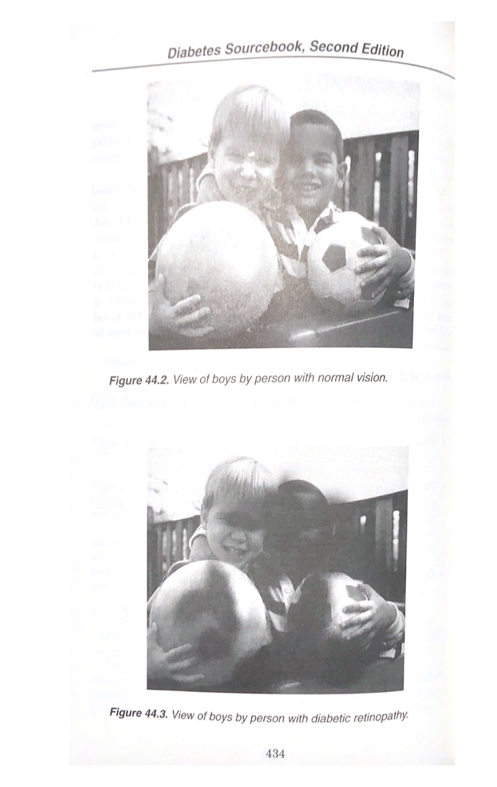
The development of an accurate and easy to read blood glucose monitor allowed patients to monitor their glucose from the comfort of their own homes; opposed to a doctor’s office. Prior to the introduction of the blood glucose monitor, patients had to rely on a product known as Dextrostix. The patient would put a drop of blood on the Dextrostix, which would change color depending on the level of glucose in the blood. The patient would then have to refer to a color chart to approximate the results. This was challenging for a number of diabetics, especially children. The home blood glucose monitor attempted to simplify the process by measuring the color of the strip electronically. A study on the impact of home blood glucose monitoring on children with diabetes found that the reflectance meter could be used “without difficulty by most children over the age of seven” [1]. In addition, diabetes can lead to kidney and liver problems, circulatory issues, and impact vision [2]. The shift from a color coded chart to a tangible number is so important, not only in managing blood sugar levels, but in making blood glucose testing more accessible to those with vision issues.
This new invention completely revolutionized how diabetics dealt with their daily lives. In Dr. Harold Geist’s The Psychological Aspects of Diabetes or How to Live in Emotional Balance with Diabetes, Geist explains that there is a sort of stigma attached to diabetes [2]. This book was published in 1964; just before the patent and release of Clemens’ invention.
“The day that a youngster is discovered to have diabetes is the one which temporarily presents a new and topsy turvy word. He is to have at least one insulin injection a day, must have his urine tested for sugar twice each day, must eat three regular interval meals a day – at definite, prescribed times and with reasonable regularity.”
Harold Geist, The Psychological Aspects of Diabetes or How to Live in Emotional Balance with Diabetes, 32.
The Ames Reflectance meter was also found to be much more reliable, easier to use, and give a more dynamic representation of the patients blood glucose profile than older urine testing kits. [3] This increase in reliability helped lead to a better understanding of diabetes as a whole by making the process of testing blood more accessible to the daily user. It opened up an entirely new set of empirical data (monitoring blood sugar levels by the hour instead of by the day or week).
The field of blood glucose monitoring is still growing. New techniques for detecting blood glucose levels are being developed, including non-invasive methods of detection, as the modern-day method includes repetitively stabbing the patient to receive blood and can be emotionally and physically exhausting [4].
There were some issues with the Ames Reflectence meter. In its earlier years, it used a lead battery as rechargeable batteries would not really hit the market until the next decade, as well as the need for a doctor’s prescription in order to obtain a meter [5]. Despite these challenges, the Ames Reflectence meter radicalized patient and doctor relationships: diabetics would no longer be dependent on doctor offices’ glucose testing equipment and would be able to produce their own studies of their bodies by monitoring blood sugar levels on a personal and private basis.
[1] J.H. Baumer, A. D. Edelsten, B.C. Howlett, C. Owens, C.A. Pennock, and D.C. Savage. “Impact of Home Blood Glucose Monitoring on Childhood Diabetes.” Archives of Disease in Childhood 57, no. 3 (1982): 197.
[2] David Mendosa, “History of Blood Glucose Meters: Transcripts of Interviews”, Mendosa.com, David Mendosa, February 15, 2006, http://www.mendosa.com/history.htm.
[3] Harold Geist, The Psychological Aspects of Diabetes or How to Live in Emotional Balance with Diabetes, (Chicago:Thomas Books, 1964), 51.
[3] D.R. Harvey, L.V. Cooper, R.F. Fancourt, M. Levene, T. Schoberg, “The use of dextrostix and dextrostix reflectance meters in the diagnosis of neonatal hypoglycemia”, Journal of Perinatal Medicine, 4, no. 2 (1976), 106.
[4] Danielle Bruen, Colm Delaney, Dermot Diamond, and Larisa Florea. “Glucose Sensing for Diabetes Monitoring: Recent Developments”. Sensors 17, no.8. (2017).
[5] Mendosa, “History of Blood Glucose Meters”.